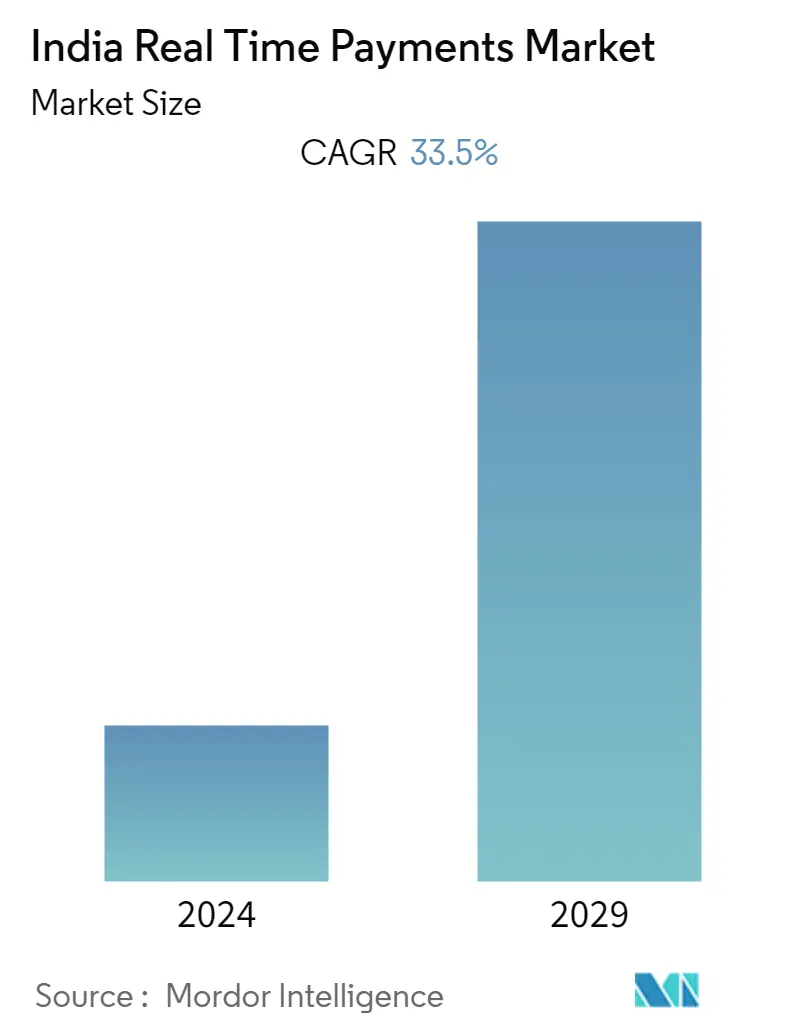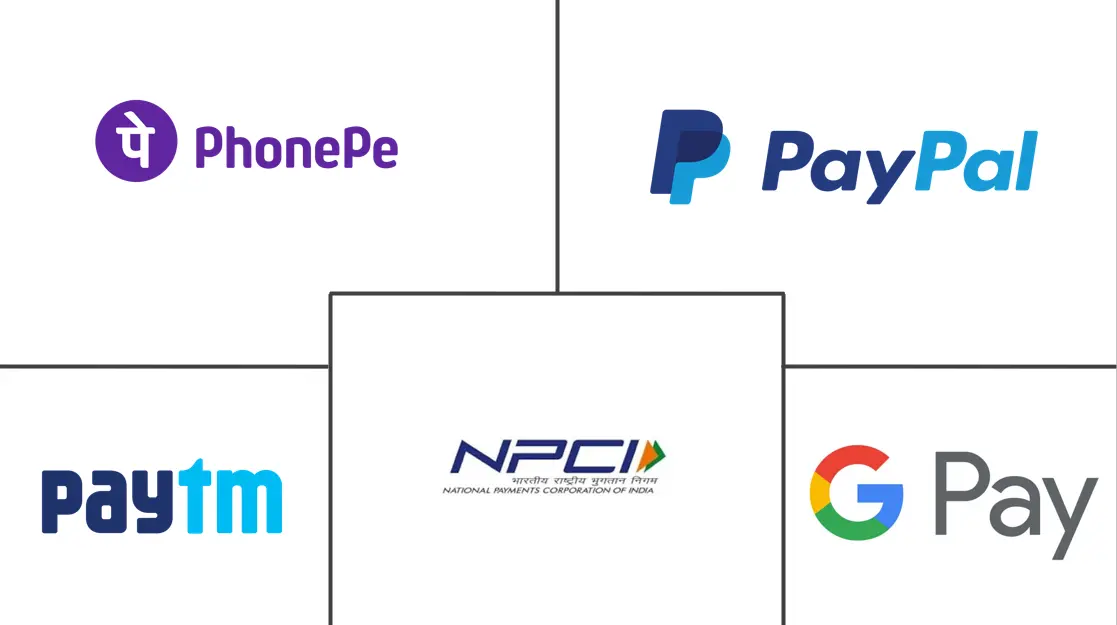Market Size of India Real Time Payments Industry

| Study Period | 2019 - 2029 |
| Base Year For Estimation | 2023 |
| Forecast Data Period | 2024 - 2029 |
| Historical Data Period | 2019 - 2022 |
| CAGR | 33.50 % |
| Market Concentration | Medium |
Major Players
*Disclaimer: Major Players sorted in no particular order |
Need a report that reflects how COVID-19 has impacted this market and its growth?
India Real-Time Payments Market Analysis
India's real-time payments market is expected to register a CAGR of 33.5% during the forecast period (2022 - 2027). Real-time payments typically focus on low-value retail payment systems (RPS); they differ from real-time gross settlement systems (RTGS) and distributed ledger payment systems. In addition to meeting the demands and expectations, real-time payments have generated interest from the regulators, competition authorities, and payment service providers. Regulators believe that instant payments will expand access to banking services, support economic growth, provide alternatives to Visa/Mastercard networks and reduce the use of cash and cheques.
- India has made tremendous growth when it comes to access to Internet-enabled devices in the country. For instance, the government's plan to fiberize all villages by 2025 under the BharatNet program has benefitted the banking sector in India, which has been able to make crucial changes in banking mechanisms by introducing digital means of accessing financial services through mobile phones. With instant payment systems, top banks in India have launched not just intuitive but also innovative and interactive mobile banking applications with features revolving around customer satisfaction.
- The decade of 2010-2020 can be termed as the decade of payment evolution in India. India has been transforming its payment systems over the past three decades. From barter systems to Unified Payments Interface (UPI) payment systems, India has come a long way primarily because of the failing resilience of traditional banking and the rise of Real-time Payment systems through digital transformation.
- India's central bank (RBI) plays a key role and has been supervising all these transformations. For Instance, in March 2022, RBI rolled out a digital-heavy plan for 2022-23. The central bank announced lending norms for digital platforms, rolled out a central bank digital currency, facilitated the setting up of 75 digital banks, and implemented a geo-tagging framework for POS terminals. It has proposed several measures to bring about structural reforms in the digital payments and fintech space, which has positively influenced the real time payments growth in the country.
- India has worked around its policies towards the introduction of innovative payment systems that provide instant credit to the beneficiary, with the launch of fast payment systems such as IMPS and UPI that are available to consumers round the clock for undertaking fund transfers and the introduction of mobile-based payment systems such as Bharat Bill Payment System (BBPS), PPIs to facilitate payment of bills and purchase of goods and services and National Electronic Toll Collection (NETC) to facilitate electronic toll payments.
- The convenience of these payment systems ensured rapid acceptance as they provided consumers with an alternative to using cash and paper for making payments. The facilitation of non-bank FinTech firms in the payment ecosystem as PPI issuers, BBPOUs, and third-party application providers in the UPI platform has furthered the adoption of digital payments in the country.
- The Covid-19 pandemic has had a mixed impact on the real-time payment system in India. The e-wallets saw increased traction for bill payments, P2P transfers, and P2B payments for essential services owing to the lockdown. Payment gateways saw an increase in volumes as transactions went online, tieing up with small stores selling essentials that are currently seeking to establish an online presence.
- Online frauds, including database exploits, ID thefts, phishing attacks, and card payment-related scams, are common in India, and the number has only increased during the pandemic. As per Microsoft's Global Tech Support Scam Research 2021 Report, consumers in India experienced a fairly high online fraud. 31% of Indians lost money through a scam making it the highest global encounter rate of 69% in the past year. Low internet bandwidth E-commerce entails a set of complex steps while completing a transaction, and even a minor glitch can terminate the task.
